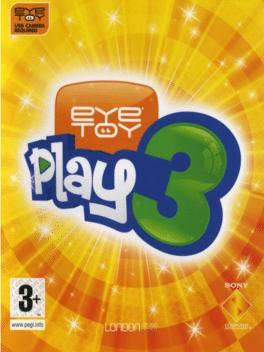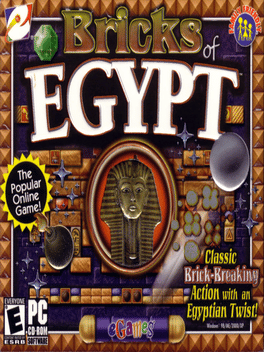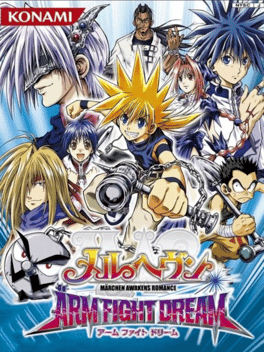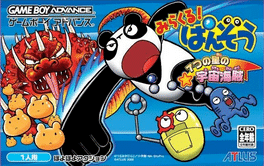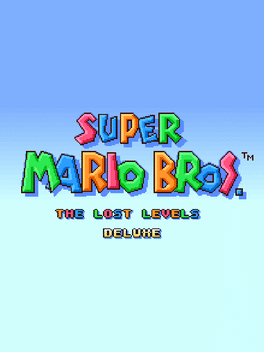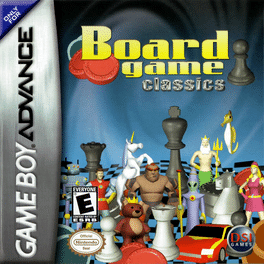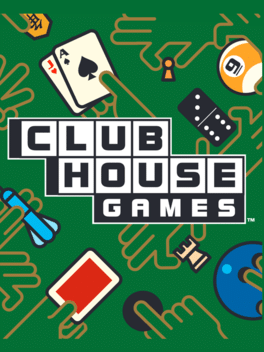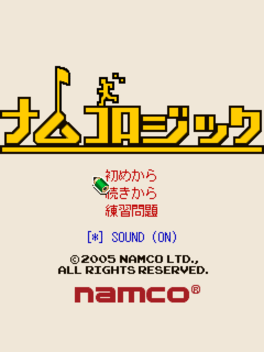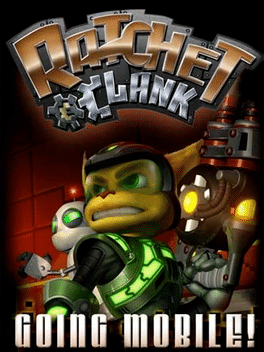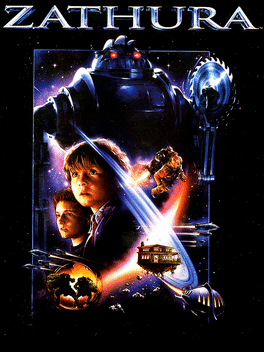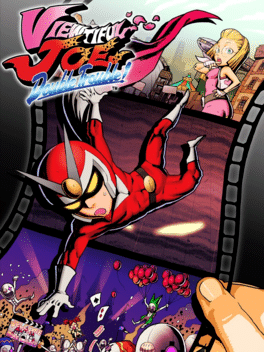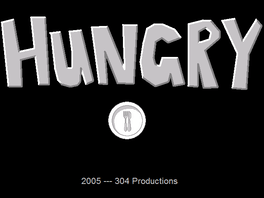New Games - Page 10353
-
Yu-Gi-Oh! Online
2005
Yu-Gi-Oh! Online
2005
Yu-Gi-Oh! Online is an online PC game released in November 2005 by Konami, based on the Yu-Gi-Oh! Trading Card Game, players of the game can duel each other online. Later two versions of the game has been released, Yu-Gi-Oh! Online: Duel Evolution and Yu-Gi-Oh! Online 3: Duel Accelerator. -
SAS: Anti-Terror Force
2005
SAS: Anti Terror Force is an Action game, developed by Atomic Planet Entertainment and published by Davilex, which was released in Europe in 2005. The world has become a dangerous place. Join the British SAS specialist anti-terror unit, take command of your squad and combat this international evil. After a brief but intense training at HQ embark on secret assault missions in Europe. Rescue the prime-minister and his staff at Number 10 Downing Street, the German Chancellor from the occupied Kanzler Amt in Berlin or the French President from the Elysee Palace in Paris. Use your wit to plan an effective assault, eliminate the terrorists and safely rescue the hostages! - Multiple missions, strategic planning, freeing hostages and eliminating terrorists - Play a member of the elite anti-terror units GSG-9 (Germany), SAS (UK) or GIGN (France) - Use a vast range of authentic weapons - Real world locations: 10 Downing street, Elysee Palace, Paris, The private yacht of the Queen, Gibraltar, Berlin, Kanzler Amt and a Nucle -
EyeToy: Play 3
2005
EyeToy: Play 3
2005
star 5.8EyeToy: Play 3 contains a set of over 50 different games you can play with the help of a USB camera connected to Playstation 2. Amount of players can vary from 1-4 players and the game is suitable for people of all ages. EyeToy: Play 3 provides single player challenges such as Ghost Grab where you enter a ghost house and try to catch ghosts while trying to avoid objects thrown at you and Boot Camp where you try to pass the different challenges thrown at you such as running through an obstacle course or following sergeants orders. Additionally, for someone preferring slightly less intense action, there is music conducting and working in a beauty salon. However when two or more players are included many more games open in party mode such as Monkey Rampage, Kitty Loves Me and Athletics, with bowling, American football and such. These party games are fast-paced and usually all 4-players can play on the screen at the same time. -
Singstar: '80s
2005
Singstar: '80s
2005
star 7.7The main focus of the game is singing those songs as good as one can. The game gives points which are distributed by the purity of singing, as in how well does one manage to stay on tune. It doesn't matter if you change octaves in the middle of the song or what words are you singing in (it doesn't have a word recognition), so your singing is rated by how well you manage to hit the correct note at the correct time. -
Ankh: Reverse the Curse
2005
star 7.2Ankh is a point-and-click 3D adventure game by Deck13 Interactive. It features a fully three-dimensional environment with cineastic camera movement. All content is fully spoken and the soundtrack reflects an authentic Egyptian atmosphere. Humor is an important aspect of the game, and the influence of classic LucasArts adventure games is noticeable. The player takes the role of Assil, the son of a respected architect in Cairo. Assil is a party animal but at some point one of his party-nights turned out sour. When he tries to have some fun in the pyramids with two friends of his, he accidentally breaks some urns and thus disturbs the mummy resting in the pyramid. The mummy punishes Assil by placing a death curse on him, and now he has 24 hours to remove the curse and save himself. Later in the game Assil meets the Arabian ambassador's daughter Thara, who is also a playable character. Requires a game patch which consists of an updated audio .dll file made for Vista to run on Windows Vista or Windows 7. -
Bricks of Egypt
2005
-
Mar Heaven: Arm Fight Dream
2005
A Konami developed PlayStation 2 exclusive 2D fighting game that never left Japan. -
World Championship Poker 2
2005
WCP 2 features Howard Lederer, Greg Raymer, Clonie Gowen, Amir Vahidi, Paul Darden, Robert Williamson III, Matt Savage, and Annie Duke. World Championship Poker 2 features a much more detailed one player game, where you now have to work your way up the ranks, starting in your mom's basement. Once you start winning and accumulating money, you can spend your winnings on increasingly better pads, and furnishings. Hit a losing streak, and you may have to hock your stuff to stay in the game. 14 types of poker are featured, including Texas Hold'em, Five Card Draw, Seven Card Stud and Pineapple. -
Miracle! Panzou: 7-tsu no Hoshi no Uchuu Kaizoku
2005
Miracle! Panzou: 7-tsu no Hoshi no Uchuu Kaizoku is an Action game, developed and published by Atlus, which was released in Japan in 2005. -
World Super Police
2005
World Super Police
2005
The rise of high-speed traffic crime in Japan and the USA has resulted in the world's first rapid-response armed highway police force. Terrorists beware the WORLD SUPER POLICE! Choose from the cream of the police driving pool, equip your vehicle with the latest military-grade weapons and take to the city streets in search of criminals too hardcore for the highway patrol. Only you have the hardware and the skill to bring them in! -
The Lost Levels Enhanced
2005
Super Mario Bros. The Lost Levels Enhanced is a rom hack of Super Mario World. The game is a remake of all 52 levels of Super Mario Bros: The Lost Levels with Super Mario Bros. 3 style graphics. There are new over worlds, some additional custom levels, changed tunes and more. -
Board Game Classics
2005
Board Game Classics
2005
The compilation includes chess, checkers, backgammon. Each game has several different options for players. -
Clubhouse Games
2005
Clubhouse Games
2005
star 7.3It's game night and everyone's invited. Play more than 20 classic board, card and party games alone, with friends or via Nintendo Wi-Fi Connection. With familiar favorites like checkers, darts and poker, Clubhouse Games is for everyone and part of the Touch Generations library. Video game newcomers will appreciate the easy-to-use interface. Players can challenge up to seven friends with one game card via Multi-Card Play or DS Download Play. Can't play checkers without shouting "KING ME!" across the table? The in-game (PictoChat-like) feature takes table talk to a new level. There's no need to lug around cards or boards when you want to play a quick game. Clubhouse Games is one-stop gaming that will appeal to everyone's tastes, whether they're in the mood for bowling, backgammon, bridge or billiards. -
Namco Logic
2005
Namco Logic
2005
Namco Logic is a nonogram game featuring fifty 15x15 puzzles based on various Namco games such as Pac-Man, Galaga, Dig Dug, and The Tower of Druaga. -
Ratchet & Clank: Going Mobile
2005
Ratchet and Clank are transported into a cell phone via the "MCGuFIN" and have to fight their way back out. -
Zathura
2005
Zathura
2005
The intergalactic journey begins when a mysterious board game thrusts the house of two young brothers, Walter and Danny, into outer space. Battle deadly aliens, menacing robots and other celestial hazards in this space journey filled with action-packed adventure! -
Viewtiful Joe: Double Trouble!
2005
star 7.6You can play a movie action hero turned real action hero in Viewtiful Joe: Double Trouble. Viewtiful Joe: Double Trouble is a cel-shaded, side-scrolling action game that combines both puzzle-solving and platformer gameplay. Viewtiful Joe: Double Trouble makes use of both screens and the touch capabilities of the Nintendo DS to help you solve puzzles and progress through the game. Joe's sister, Jasmine, also makes her first appearance in the series to help him out. -
Hungry
2005



